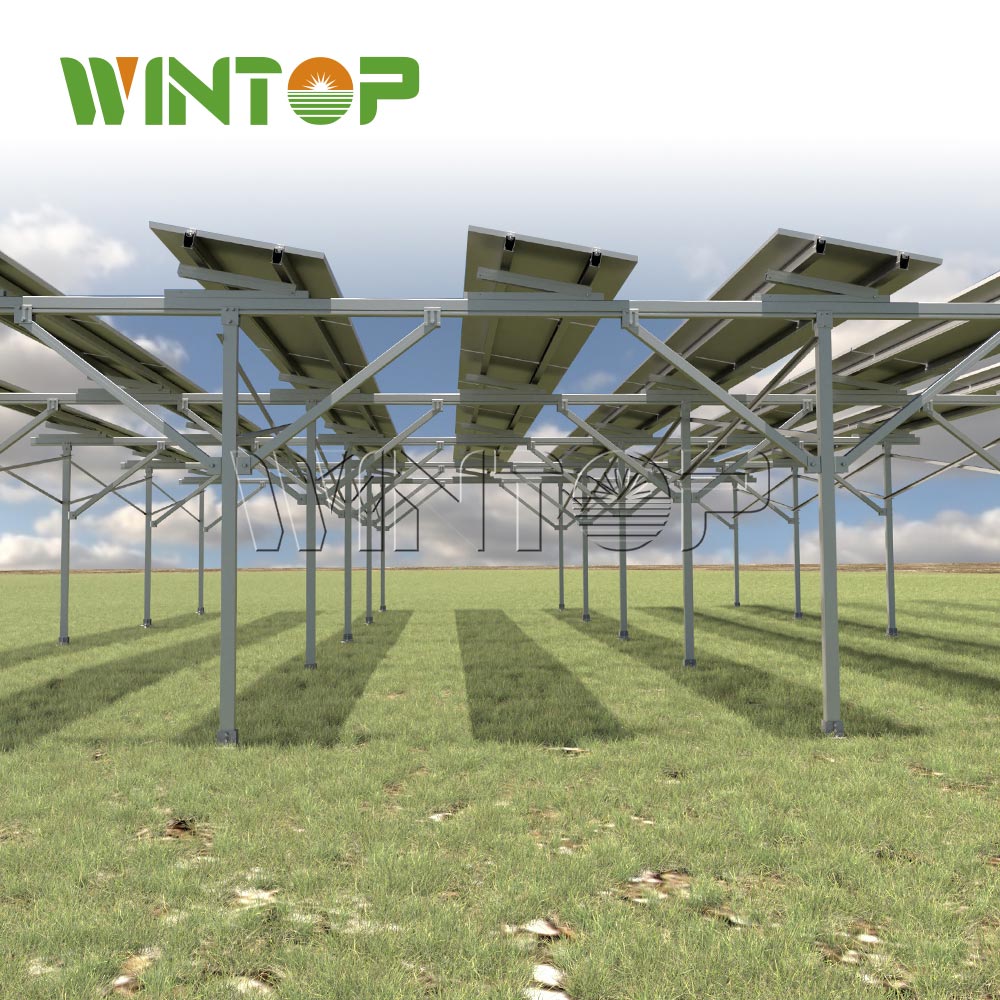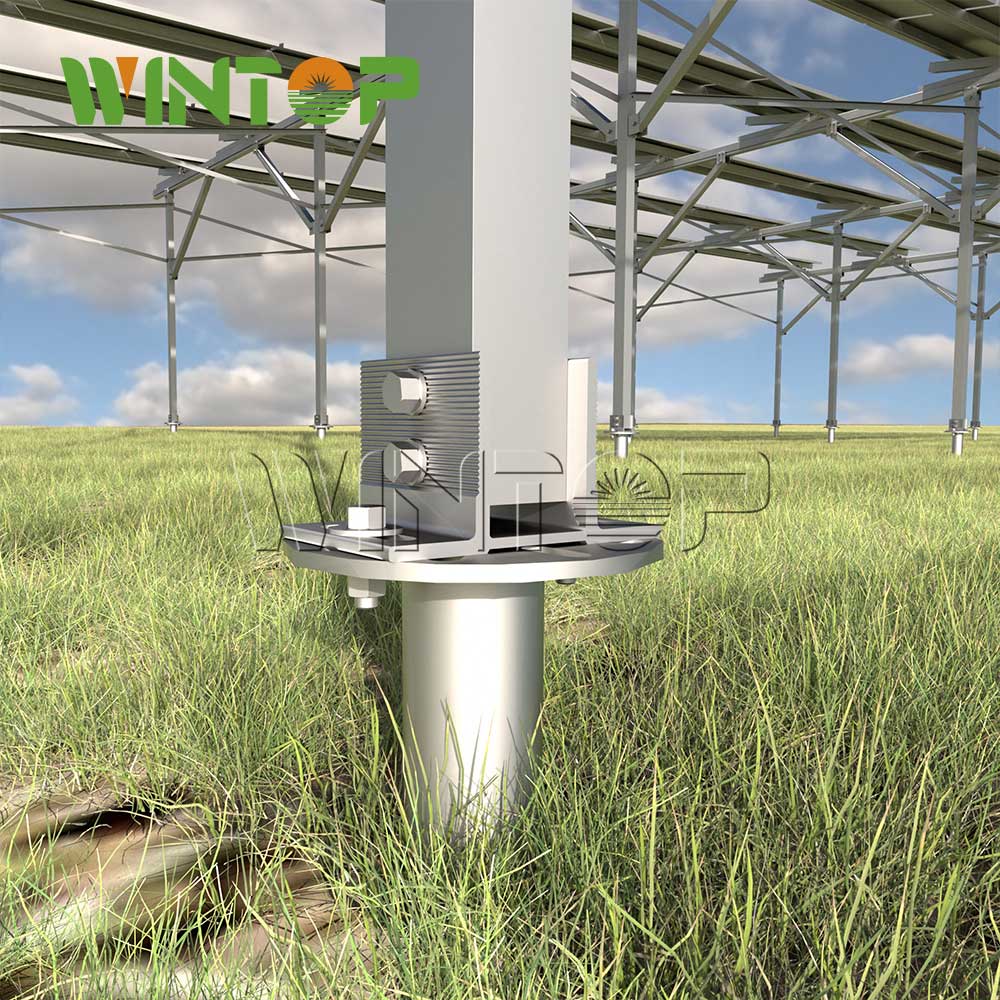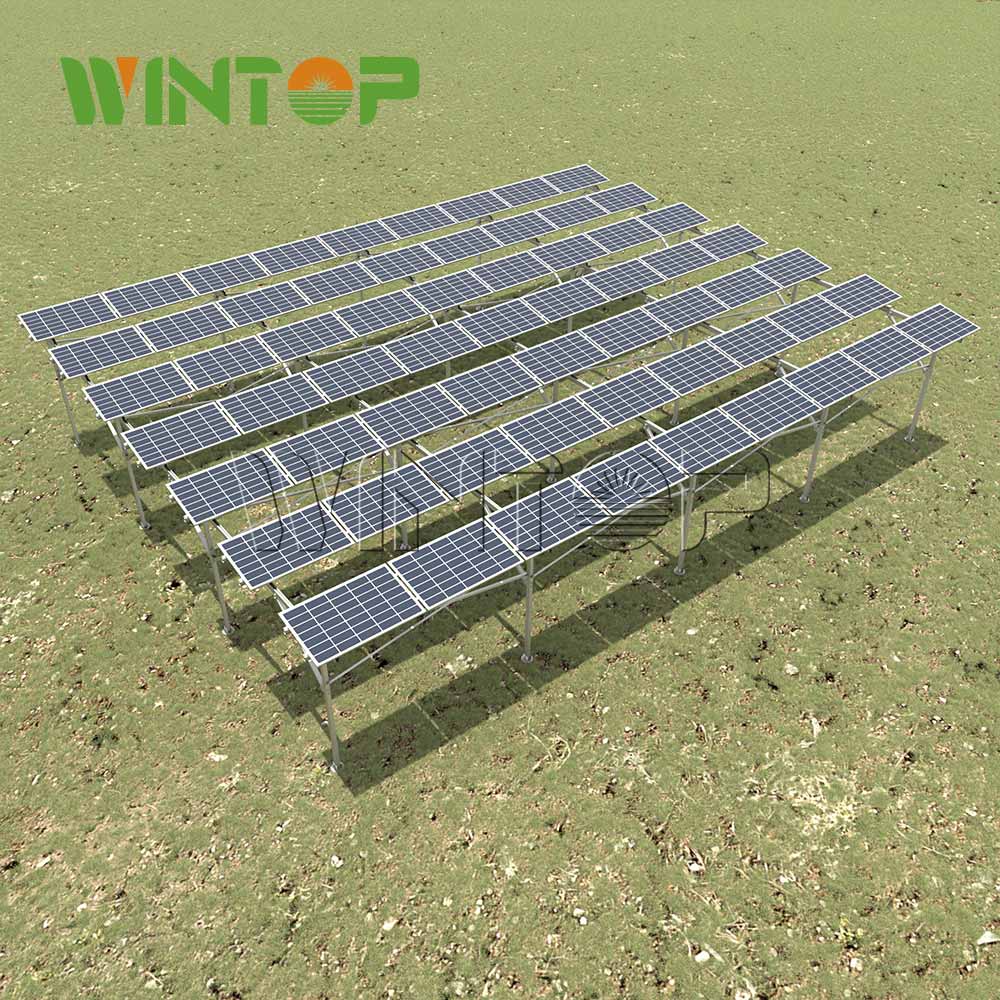Solar Agricultural Brackets belong to a special type of solar bracket, specifically used for the installation and support of solar equipment in the agricultural field. Its main function is to provide a stable platform for fixing solar panels or solar collectors at specific locations on the ground or farmland, in order to maximize the absorption of solar energy and convert it into electrical or thermal energy.

Solar agricultural brackets are usually made of metal materials such as galvanized steel or aluminum alloy, which have strong weather resistance and corrosion resistance to adapt to long-term use in outdoor environments. The design of the bracket takes into account the needs of agricultural production, such as adjusting the bracket angle to obtain the optimal solar radiation angle to increase energy harvesting efficiency.

There are also various installation methods for solar agricultural brackets, including ground brackets, slope brackets, and overhead brackets. Ground bracket is the most common type, which installs solar energy equipment on the ground of farmland without occupying the space for crop planting. The inclined bracket is installed on the slope, which can provide a larger solar radiation area and facilitate the passage of water and light.

The use of solar powered agricultural brackets can bring various benefits. Firstly, it can provide clean and renewable energy for agricultural production, reduce reliance on traditional energy sources, and lower operating costs. Secondly, solar powered agricultural brackets can provide shading effects, protecting crops from the effects of high temperatures and strong light, and helping to improve crop yield and quality. In addition, solar powered agricultural brackets can utilize farmland space, achieve diversified energy utilization, and promote sustainable agricultural development.

In summary, solar agricultural brackets are a type of solar bracket specifically designed for the agricultural sector, with strong stability and weather resistance. They can be used to install solar equipment, provide clean energy, and improve the agricultural production environment, contributing to the sustainable development of agriculture.





